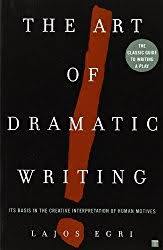How to manage Rising Conflict in Stories

Rising Conflict in the writings of Lagos Egri
Staying with the work of Lagos Egri on how best to manage rising conflict in stories, this post specifically examines the role of transitions between emotional states.
Egri informs us that there are four such types:
Handling Rising Conflict
1. Foreshadowing (good)
2. Static (bad)
3. Jumping (bad)
4. Slowly rising (good)
Foreshadowed conflict should occur near the beginning of the story and should point to the forthcoming crisis.
In Romeo and Juliet, the warring families are already such bitter enemies that they ready to kill each other from the get-go.
Static conflict remains unchanging, spiking for only the briefest of moments and occurs only in bad writing. Arguments and quarrels create static conflict, unless the characters grow and change during these arguments. Every line of dialogue, every event, pushes towards the final goal.
In jumping conflict, the characters hop from one emotional level to another, eliminating the necessary transitional steps. This is also bad writing.
Avoid static and jumping conflict by knowing, in advance, what road your characters must travel on:
Fidelity to infidelity
Drunkenness to sobriety
Brazenness to timidity
Simplicity to pretentiousness
The above represent two extremes—start and destination.
Transitioning between less sharply seperated emotional states indicates slowly rising conflict between characters. This is the more desirable type of conflict in stories.
Supposing a character goes from love to hate. Let’s imagine there are seven steps between the two states:
1. Love
2. Disappointment
3. Annoyance
4. Irritation
5. Disillusionment
6. Indifference
7. Disgust
8. Anger
9. Hate
If a character goes from 1 to 5 at once, this constitutes jumping conflict, neglecting the necessary transition. In fiction, every step must be clearly shown. When your character goes through steps 1 to 9, you have slowly rising conflict. Each level is more intense than the previous one, with each scene gathering momentum until the final climax.
Summary
Rising conflict that transitions from level to level is the best way to manage the strife between your story’s characters.
Tweet
The post How to manage Rising Conflict in Stories appeared first on Stavros Halvatzis Ph.D..



